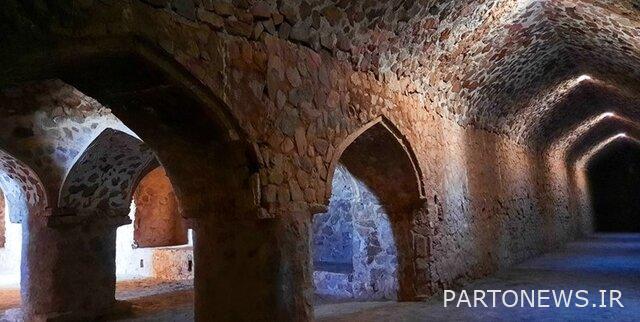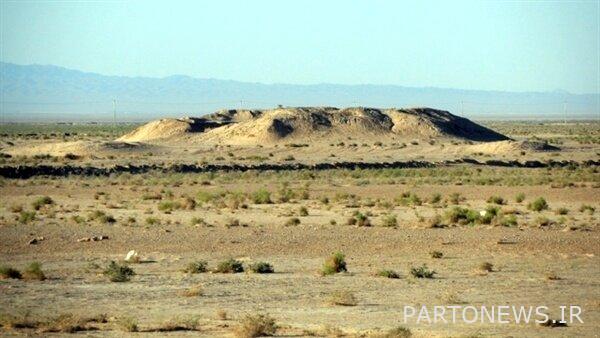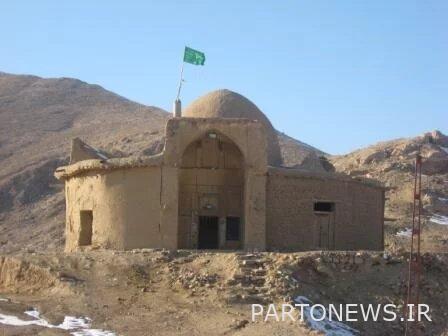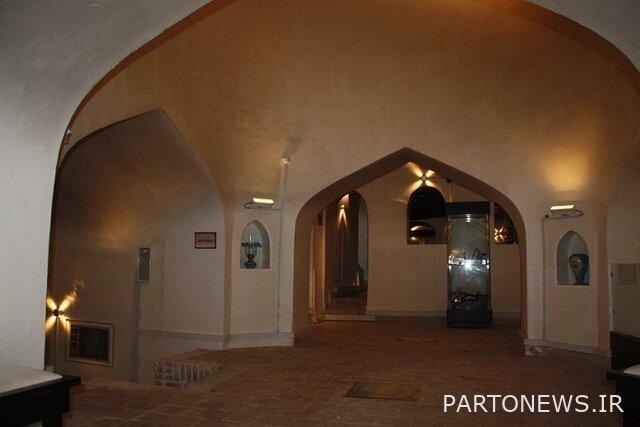Jajarm; One of the oldest human settlements and the highway of evolution of the Khorasan region

Jajarm is one of the cities of North Khorasan, which with an area of more than 3 thousand hectares, has a long history and is considered one of the oldest human settlements in North Khorasan. This region has continuously played a prominent role in the cultural evolution of the Khorasan region from prehistoric times to late Islamic periods and has been of interest.
Jajarom city is located in the southwest of North Khorasan province and is bordered by Mane and Samalqan cities from the north, Garmeh city from the west, Semnan province from the south, Razavi Khorasan province from the southeast, Esfrain city from the east, and Bojnord city from the northeast. is limited. This city with an area of 3654 km has 3 cities, 3 districts, 5 villages and 55 villages. The population of Jajarm city is estimated at 36 thousand people.
In this article you will read:
Natural geography of Jajarm city
In general, Jajarom city is considered to be a dry region due to the amount of annual rainfall and has a desert and semi-desert climate. The heights located in the north of the city, which extends from east to west on the edge of the north of the city, are sometimes more than 2000 meters high and have generally caused milder weather in this region. The isolated heights of the southeast of the city include a part of Joghtai mountains. The permanent but low water and very salty river Kal Shur flows in the east-west direction in the south of the city and flows into the desert plain in the south of the city. A large part of the climate of this region is desert and steppe. The highest peak of the city is Mount Saluk with a height of about 2659 meters, which is connected to the Aladagh mountain range along with the heights of the north of the city.
Historical background of Jajarm
Thanks to its strategic location on the caravan routes, Jajarom city has always been considered and has continuously played a prominent role in the cultural evolution of the Khorasan region from prehistoric times to the late Islamic periods. The presence of large sites from the Neolithic, Copper Age and Bronze Age, such as Tepeh Pahlan, Haidaran and the vast area of Chalo in the area of Jajarm city, has made it one of the oldest human settlements in North Khorasan. The large scattering of ancient sites related to the Parthian and Sassanid eras in this city speaks of the prosperity of this region in the historical period by taking advantage of its convenient location on the Silk Road and the political and commercial equations of that era.
Examining the reports of historians and geographers of the Islamic period also shows the prosperity of this region throughout the Islamic period. The minting of various coins, especially gold coins in Jajarm during the Ilkhanid period and the creation of various caravanserais and rabats in its different parts, best tells the prosperity of the region in the middle Islamic centuries. This area maintained its importance until the end of the Qajar period, until with the introduction of modern transportation equipment, the construction of transit roads, and the removal of the old road network and the abandonment of caravan roads and caravanserais, its importance gradually decreased and rapidly declined.
Below you will read some of the historical monuments of this city, whose information has been collected by the General Department of Cultural Heritage, Tourism and Handicrafts of North Khorasan.
Jajarm Jame Mosque
The mosque building is located in the middle of the historical context of Jajarm city, where parts of them such as Kazem Khan citadel and garden, Kushk building and some other buildings are still left. Some researchers attribute the original building of Jame Mosque to the Seljuk period. This mosque is of the type of Shabistan mosques and its plan is very basic and similar to the plan of a porch. The entrance of the ports is located on its north side, which is connected to a small courtyard with dimensions of 5.7 x 5.7. On both the eastern and western sides of the mosque courtyard, there are cloisters, each of which is about 3 meters wide. The space of the naves is covered by an arch and is connected to the central courtyard by porticoes. Behind the western nave, an additional space was built in line with the main nave, which was used as a winter nave in the cold seasons of the year. The roof of this hall is covered with a fixed arch and an altar is installed at its southern end.
Jajarom Jame Mosque does not have a minaret, unlike the common pattern of mosque construction, and its exterior is simple and devoid of decoration. Only on the forehead of the porch and at the entrance to the dome of the house are some turquoise tiles with inscriptions that are severely damaged. Apart from this, most of the decorations are concentrated in the dome of the house, which often includes plaster decorations, carbands, trains in the altar area, lakhis and some inscriptions. In the late Islamic periods (probably Safavid), in some parts, the plaster coating was decorated with ocher red.
The direction of the courtyard is north-south, and its south side leads to the dome of the house through a long entrance. The altar of the mosque is located on the south side of the dome of the house, in the middle of the south wall, and is 235 cm high and 85 cm deep. The circular dome is built with the help of four elephants whose heads are decorated in the form of solar shards on the square space of the dome of the house. A 24-pointed star is prominently carved in the center of Ergachin dome. The building materials are clay, mud, wood, stone and plaster mortar, which most likely originally had a tile covering, which has been lost today except for the small part that was mentioned. . The Jame Mosque of Jajarm has been restored in several periods and it seems that there were fundamental changes in it during the Timurid period. In such a way that its overall shape shows the architecture of the Timurid period.
Etimad al-Sultaneh describes the building in the book of Al-Shams as follows: Above this page, where the inscription is missing, three tiles are installed on a green brick, two-thirds of which is broken, it is written “Tawaklat” and “Ali Allah” on one side. On one side and in the middle is a pink similar to (Majmar) hung with a black line, and in the other corner of the brick is written “God be upon that Muslim servant” and below this phrase “in work” and below that “on the famous tithe” and below that ” “Decade of Muharram Sunnah” is lower than “Taqbal Allah from me”. In the brick of the middle tile, the word “Ahad” is written with a raised calligraphy. On top of another green brick, “There is no god but God, Muhammad is the Messenger of God” and below Fatiha al-Kitab, after that Surah Tawheed, and below “on the 20th of the month of the year Seven and Seventy” and after “Seven and Seventy” the word Laiqra, which is almost certain. It was “Khamsamae” and it seems that on one side of the length of the brick is also written An al-Din And al-Islam and on the other side Shahdullah anh la ilaha ilaha wa al-Malaika wa ulwal-al-alm Qaim al-Qast. These bricks were brought here from another place and installed, whether that place was outside the mosque or inside, God knows.
Currently, the inscription on the tiles of the south porch is damaged and the word “Khamsamae” has disappeared. The research carried out in the place shows that in the past years, the mosque had inscriptions on which the poems showed the date of restoration of the building:
Darvish Ali became Sa’i of this mosque
I asked for a date from Pir Khard, and the words fell from the bud
The article mentions the date entered in the second verse (the word treasure) in 1034 as the date of restoration of the building. Probably, there were tiles on the facade of the south porch of the mosque, which showed the date of its construction, and they were destroyed later. The three current tiles were probably moved from their original place during the repairs and fell apart. These tiles, which Etimad al-Saltaneh has also provided a detailed description of, are comparable in terms of their manufacturing technique and glaze color with the tiles that once existed in the tomb of Ali Ibn Mahziyar in the east of Jajarm city. Therefore, the date mentioned in them (557 AH) is not related to the construction time of the building.
Tepe Pahlan

Tepe Pahlavan is one of the most important and oldest sites of the prehistoric period in North Khorasan, the history of settlement in which dates back to the Neolithic and Copper-Stone periods, about 7,000 years ago. Archaeological studies in this ancient site have shown that Tepeh Pahlavan has a special place among other ancient sites of the province as a workshop site related to the production of stone tools and ornaments.
Tomb of Khwaja Ali Bin Mehziar
The tomb of Khwaja Mahziyar, which is located in the eastern outskirts of Jajarm, at the beginning of the Jajarm-Sabzevar road, is considered among the valuable religious-historical works of Jajarm city, whose construction is attributed to the Ilkhani period. This mausoleum has a simple four-vaulted plan, which is made into an octagonal dome in Pakar, and finally, with the help of four elephants, a large dome is built on top of it. According to some religious traditions, this building is the burial place of Abul Hasan Ali Bin Mahziar, one of the greatest Companions of the Imams of Athar. Ali bin Mahziyar was represented by Imam Reza (a.s.) and Imam Javad (a.s.) in Jajarm areas, and many books and writings have survived from him.
Prince Ibrahim building in Darband

Prince Ibrahim’s tomb is one kilometer north of Darband village, one of the functions of Shogan district of Jajarm city. The building of Imamzadeh is located on the eastern slope of the hills, which includes settlement layers from the 7th-8th centuries to the Safavid period. The main plan of the building is quadrangular and influenced by the style of four arches, but with subsequent additions, it has taken on a circular shape.
A short decorative minaret is built on the exterior of the ports on the sides of each entrance. Inside the eastern and northern porches, there are plaster decorations in the form of molds. Although there is no inscription in the building and no clear document can be found in the historical texts from the time of the construction of Prince Ibrahim’s mausoleum, the architectural style of the building and the way of execution of arches and arches evoke the architecture of the 7th and 8th centuries. According to the residents, Imamzadeh Ibrahim, the brother of Imam Reza (a.s.) is buried.
Jajarm’s cellar
Jajarm crypt is one of the historical monuments of Ilkhanid period, which is built in two floors with stone materials and plaster mortar. The lower floor is built underground and has an entrance on the eastern side, which leads into the building with a gentle slope. The roof covering of the lower space is arched and four columns under the roof carry the load of the upper floor. The upper floor of the building has a four-arched plan and its exterior is decorated with arches.
The location of this building is located in the eastern suburbs of Jajarm, at the beginning of the Jajarm-Sabzwar road.
Qazlar Qala
Qazlar Raqla is one of the defensive castles of Jajarm city, which is built on a high mountain on the northern edge of Jalga Shaqan and overlooks the adjacent plain. The plan of the castle is oval and it is built with unhewn stones and mud mortar on the foundation of rocks. The date of the construction of this castle is not known exactly, but it is most likely to have been created in the Islamic Middle Ages.
This castle is located in Jajarm city, north of Jagdi village.
Jajarm Old Bath (Garmabah and History Museum)

Jajarm treasure bath with an area of 700 square meters is located in the heart of the historical fabric of the city and next to the remains of the old citadel of the city known as Narin Qala and the historical mosque of the city and belongs to the late Islamic period. The entrance to the bathroom leads to the dressing room through a hallway and 5 steps, which is connected to the greenhouse with a connecting corridor known as the Meander. The meander is a diagonal corridor that is a kind of transition space to reach from the hot and humid space of the greenhouse to the cold and drier dressing room. The other parts are the treasury and several chambers with a domed roof. In total, the historical bath of Jajarm consists of five parts, including three internal parts and two external parts. The internal parts of the bathroom include a dressing room, a greenhouse, a safe and a reservoir. The outer parts also include the fireplace, hot and cold water source and fuel tank. Due to its cultural and historical characteristics, this building has been registered in the list of national monuments under number 22212 in 2006. Studies and restoration of the historical bath of Jajarm started in 2006 and in 2010 it was put into use as a museum of the history of the city.
The Museum of Garmabeh and the history of Jajarm city consists of eight pavilions, in each of which a corner of the customs, history and culture of the people of the region is displayed. The museum’s booths include the bath master’s booth and the clothing booth in the Sarbineh area, the stalls of the dresser, attari and archeology in Garmkhaneh, the Muharram booth for the introduction of the ritual of palm turning and the booth for the introduction of celebrities, as well as the booth for the introduction of handicrafts of Jajarm city, which together give a vivid picture of They draw the history and culture of Jajarm region for visitors.
The royal house of Bani Hashem
The house known as Bani Hashem’s Shahneshin is one of the valuable works of the Qajar period in Khorasha village of Jajarm city, which was built in two floors and the upper floor was a place for receiving official guests and government dignitaries. This building is unique in terms of having beautiful plaster decorations, which are concentrated around the fireplaces, as well as Tholt inscriptions, including Quranic verses, supplications, the name of Panjtan, the date of construction, and the name of the master plasterer and scribe.
Djerbat rock patterns
The patterns on the rocks of Djerbat, which are known as petroglyphs in the region, are a collection of animal patterns, including a camel, an antelope with long horns, a camel, a man on a horse, and some Islamic religious symbols and inscriptions in Arabic and Persian script, which are written by hitting a sharp object. It is engraved on the body of the black rocks at the foot of the mountain. This collection of motifs does not belong to a specific period and has been imitated many times from older motifs in successive centuries.


